
The North American Aviation XB-70 Valkyrie was an experimental supersonic heavy bomber. Originally intended as a replacement for the B-52, the program was cancelled and only two planes were built. The XB-70 instead became an important research vehicle for studying supersonic flight. After retiring from its career as a research vehicle, it has become an iconic symbol of the National Museum of the US Air Force during its 50+ years of display.
Origins and Career as a Research Vehicle
The XB-70 Valkyrie was originally conceived as a high-altitude nuclear strike bomber capable of flight at 3 times the speed of sound in response to a 1954 US Air Force competition for a new strategic bomber to replace the B-52. [3][4] In 1957, North American Aviation (NAA) won a government contract to produce their concept, the XB-70 Valkyrie. However, with the introduction of surface-to-air missiles in the late 50s and early 60s, the decision was made in 1961 to cancel the program. [3][4] Despite this, the Air Force still went forward with ordering two XB-70As for research and testing purposes.
The first XB-70, S/N 62-0001, was completed on May 11,1964, and flew for the first time in September of 1964. [3] Known as Air Vehicle 1 (AV-1), this is the Valkyrie that first flew above Mach 3, which it did so for the first time in October of 1965. However, after this sole Mach 3 flight, AV-1 was limited to a top speed of Mach 2.5 due to potential structural problems at Mach 3. The second Valkyrie, S/N 62-0207, known as AV-2, was completed in May of 1965, and featured several improvements over AV-1. AV-2 first flew on July 17, 1965, [4] and over its lifetime flew over Mach 3 multiple times, on one such flight maintaining a speed over Mach 3 for 32 minutes. [3]
In 1966, an agreement between NASA and the Air Force led to the XB-70 being shared between both entities for research purposes, with the second Valkyrie, AV-2, being the primary aircraft intended for usage during testing. [2] Tragically, AV-2 was lost in a mid-air collision on June 8, 1966 along with her co-pilot Maj. Carl Cross and NASA pilot Joe Walker, who was flying an F-104N chase plane. [2] Though the loss of AV-2 significantly impacted testing, AV-1 continued to be put to work carrying out research on super-sonic transports (SSTs). Data gathered from these flights and experiments were invaluable to the design of future aircraft capable of supersonic flight. [2]
Retirement to the National Museum of the US Air Force
After a 5-year career of research flights from 1964 to 1969, the sole surviving Valkyrie was retired to the National Museum of the US Air Force at Wright-Patterson Air Force Base in Dayton, Ohio, making her last flight on Feb. 4, 1969. An interesting comment from a former NASA Valkyrie test pilot Donald L. Mallick, who piloted a TB-58 chase aircraft on the Valkyrie’s last flight, was that “We did not want to land anywhere, except Wright-Pat. We felt that if we did have to land somewhere other than the planned destination, the airplane might still be there.” [6]
Once the Valkyrie safely arrived at Wright-Patterson, she was parked outside at Area C on Patterson Field. Almost immediately, she began attracting attention from large crowds of visitors who were fascinated by the unique plane. By this time, the Valkyrie had started to become one of the museum’s most famous pieces, and for many Dayton residents the NMUSAF became associated with Valkyrie due to the Valkyrie’s prominent size and uniqueness. The ability of the Valkyrie to draw crowds only increased in June of 1970 when construction began on a new museum and in November of the same year when the collection of aircraft had to be moved to the new site. [1]
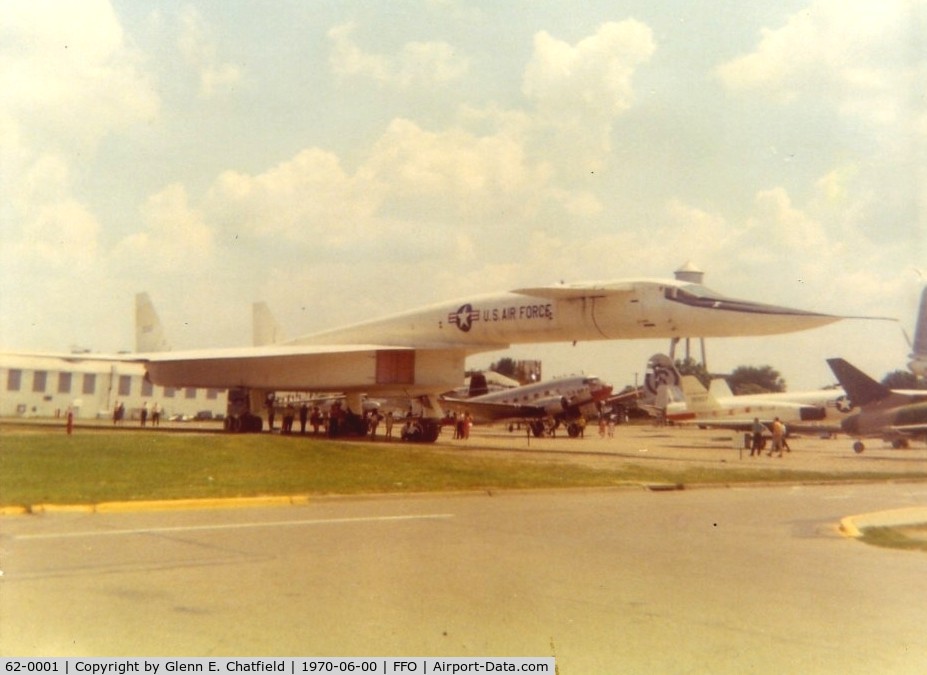
Movement of the collection of planes started in fall of 1970 and proceeded smoothly, apart from the collision of the wing of one plane with the railings of a bridge. The planes traveled down 7 miles of Ohio State Route 444 to the new location. In order to make the route passable for larger planes, highway signs and signal lights had to be taken down, trees were trimmed back, and fences were either taken down or pushed far enough away from the road so that the planes could fit. Among the last of the planes moved was the Valkyrie. For this move, she was stripped of her 6 engines, an air conditioner, 7 tons of lead ballast, safety plates, doors, and a 3000-pound stabilizer in order to reduce her weight. Despite the removal of so much equipment, she still weighed nearly 147,000-pounds (dry weight without removal of the equipment was close to 240,000-pounds!). [8] However, this was an acceptable weight that now allowed her to be taken over the Route 444 Bridge near Mad River. Other difficulties faced during the movement of the Valkyrie was the width of her landing gear. While crossing the bridge, there was only 8-inches of clearance between the landing gear and the curb. [1]
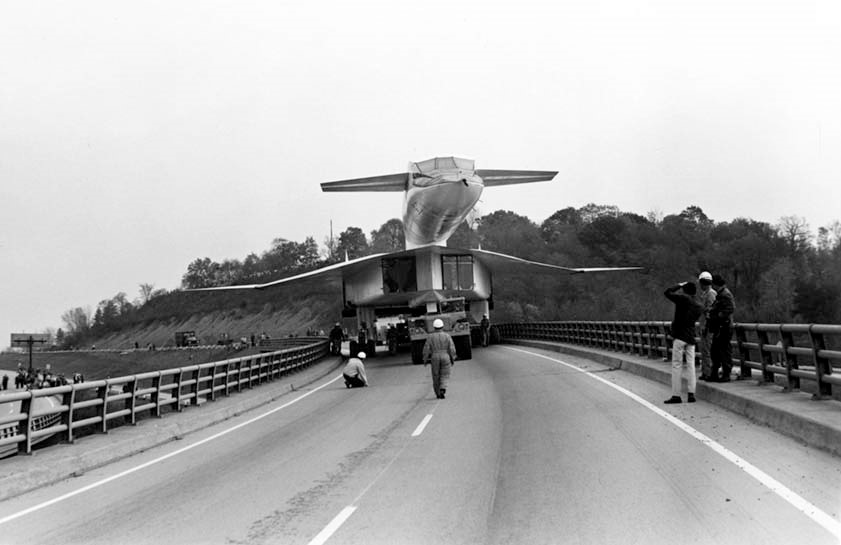
As one might imagine, this was quite the spectacle, and it certainly helped cement the place of the Valkyrie as one of the museum’s highlights. The Valkyrie was placed on display outside of the museum, facing the Museum’s access road and becoming a memorable first sight for museum visitors. With the opening of the new museum in September 1971, the Valkyrie started to become the museum’s unofficial logo. [1]
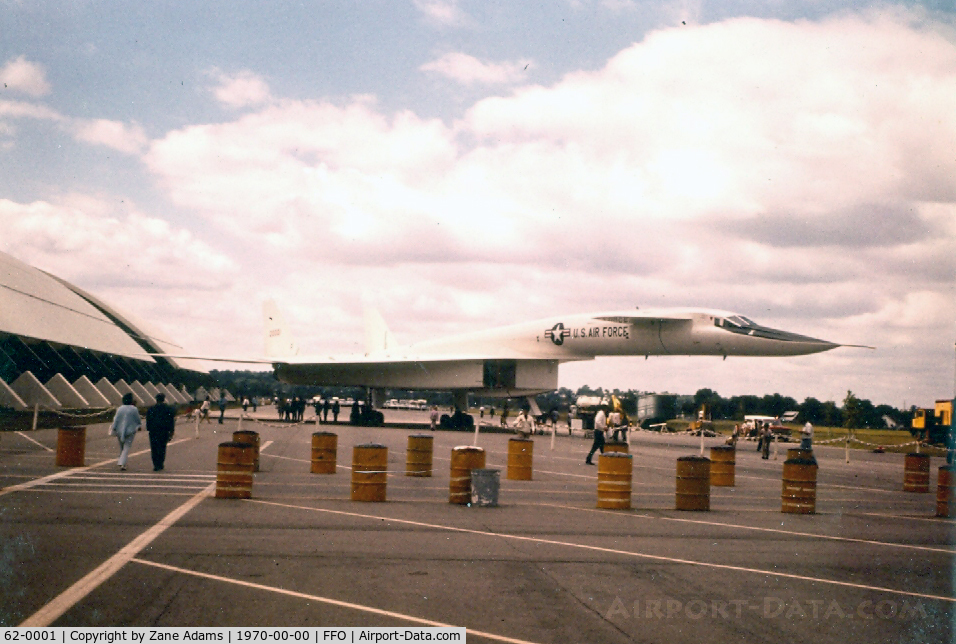
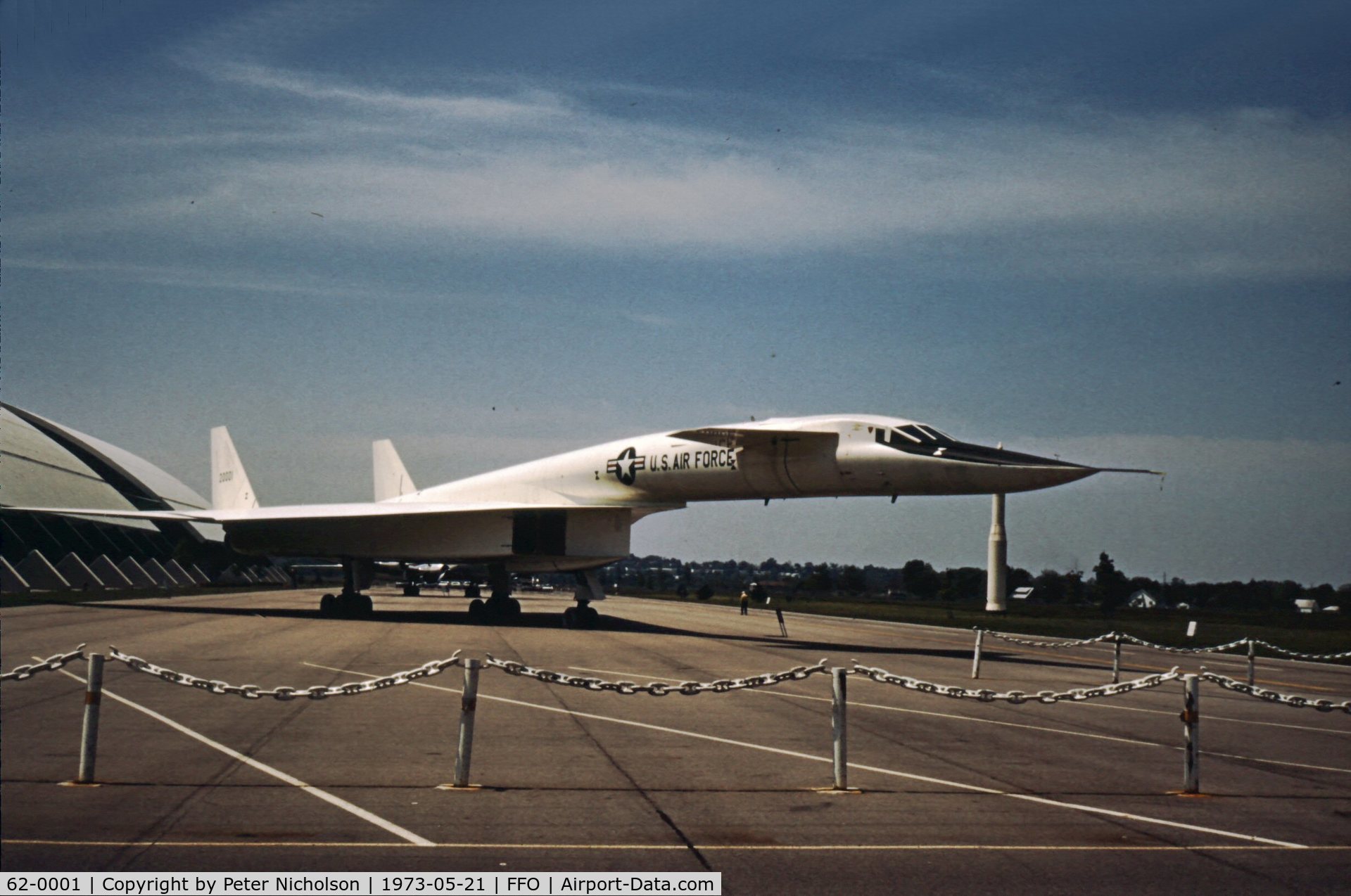
The Valkyrie remained on outdoor display for the next 17 years, welcoming millions of visitors to the museum through all sorts of weather. Unfortunately, as one might expect, all this time in the outdoors had not been kind to the Valkyrie. [1] Throughout the 17 years of outdoor display, the Valkyrie was moved intermittently to a separate hanger for periods of maintenance, and twice to be repainted. It was also moved several times to accommodate the re-positioning of newly acquired aircraft and for yearly refreshes of the aircraft on display. [1] Moving the Valkyrie was difficult and time-consuming process, with the extreme weight of the Valkyrie requiring steel plates to be placed underneath her landing gear so that she wouldn’t sink into the tarmac. On one occasion while moving the Valkyrie, one of the main landing gear tires caught the edge of one of these plates and blew out. Thankfully no one was injured, and the Valkyrie was unharmed aside from the tire. [1]
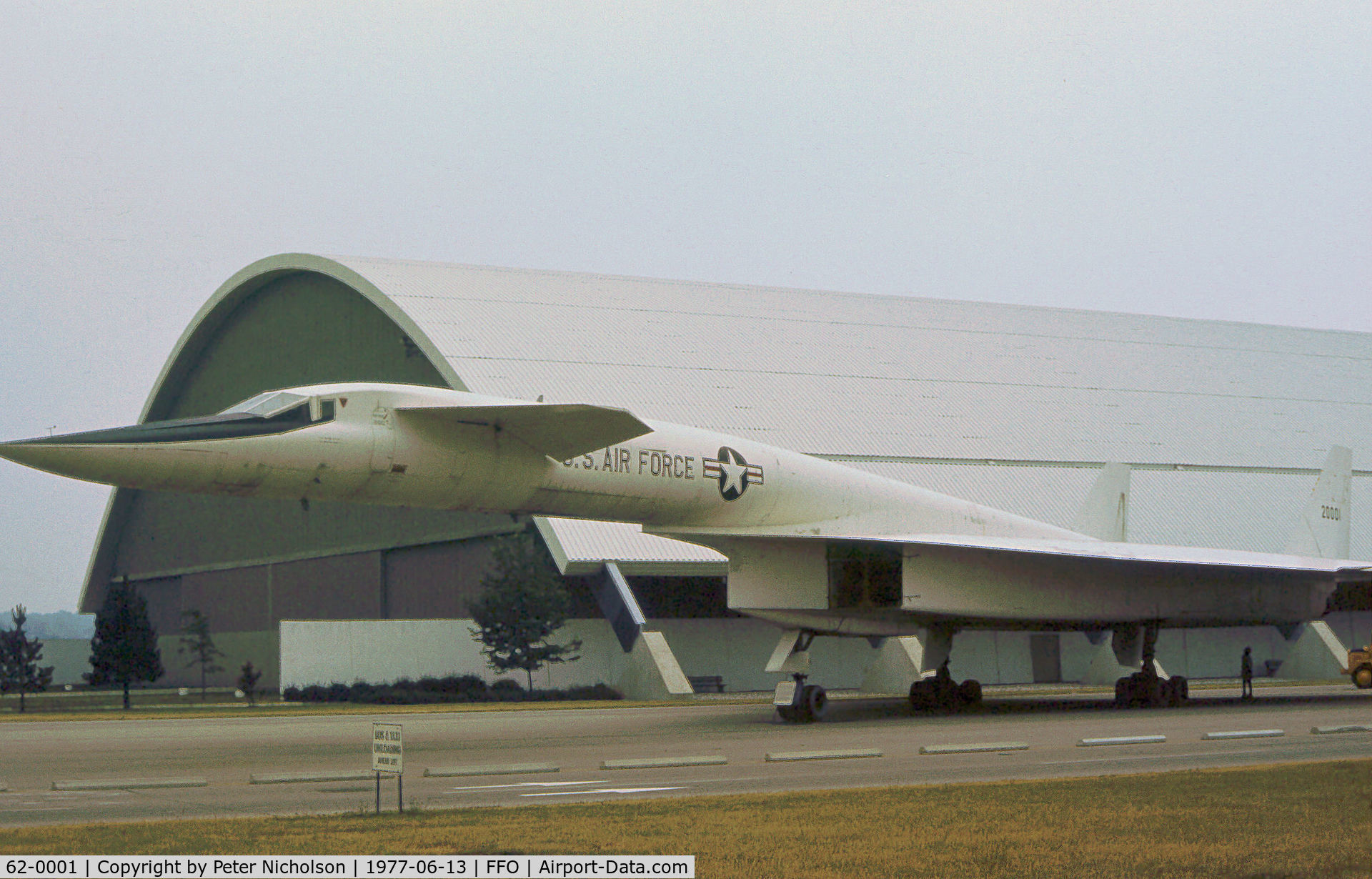
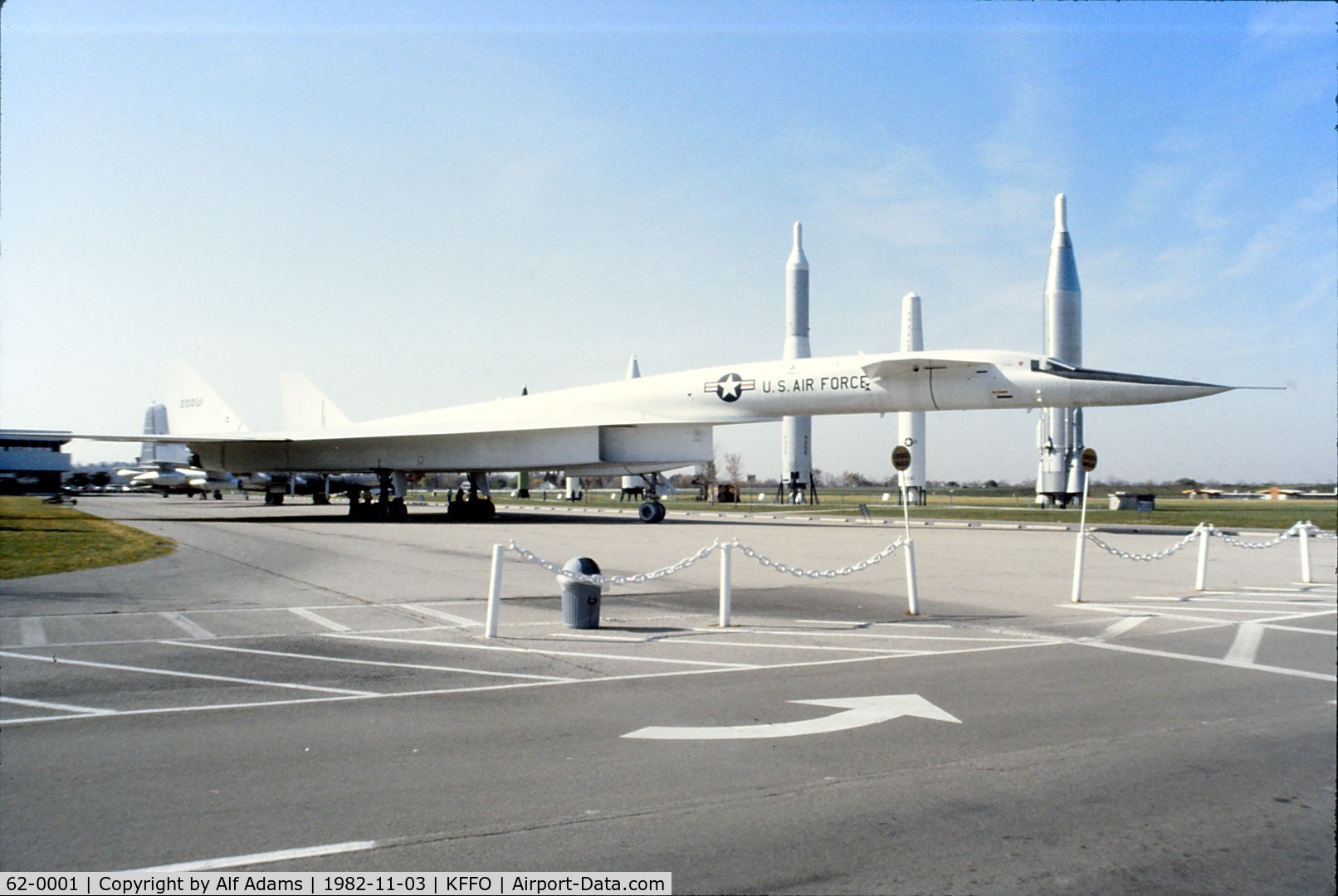
Major Structural Damage and Repairs
A concerning trend seen during the maintenance work was delamination visible through the Valkyrie’s skin. [1] The Valkyrie’s unique composite design was an important piece of its structure, and the delamination visible on its “neck” was a sign that the many movements of the Valkyrie were having a negative effect on its structural durability.
In 1987, the Valkyrie was set to be put on display indoors in the Modern Flight Hanger for what was intended to be a permanent display. As part of the preparation for her move indoors, the Valkyrie was brought to the restoration hanger again for maintenance. As she entered the hanger, a loud bang was heard, and metal shards fell from her forward landing gear compartment. At the time, restoration staff concluded that it was simply a metal conduit support, and that it was not a structural integrity problem. It took until 1992 before it was discovered that this was not the case. [1]
Once the restoration crew finished the routine maintenance, the Valkyrie was set to finally enter indoor display. The first attempt to move her into the Modern Flight Hanger was halted by her twin tails being 2 inches too tall to fit through the hanger doors. The museum staff, to solve this, deflated the main gear struts and fully inflated the front gear strut to make the Valkyrie lean backwards. This successfully lowered her tail by 3 inches, allowing the Valkyrie to fit into the hanger. It was also around this time that the museum replaced the Valkyrie’s tires, as the set on the plane were the original set and were worn from years of outdoor exposure and the many moves that the Valkyrie had made. The replacement set, the only set of spare tires that the museum had, were filled with polyurethane rubber to eliminate the need to service the tires with high-pressure air. [1]
In 1992, the museum was about to receive a temporary exhibit of former Soviet space hardware and needed to move the Valkyrie. Before moving the Valkyrie, she was inspected and it was found that instead of being a conduit support fracture, it was actually her nose gear drag brace support bracket that had fractured. Examination from aircraft structural engineers concluded that any further movement of the Valkyrie would cause her nose gear to collapse, and that it was a miracle it hadn’t already collapsed. The repairs took almost a year to complete, and the new parts, although not airworthy, were said to be stronger than the original piece and more capable of taking the stresses of being towed. [1]
Following these repairs, the Valkyrie sat for the next 5 years, remaining in the Modern Flight Gallery. [1]
2000s to Current Day
In 2002, the Valkyrie, along with a large collection of other aircraft, was moved to a hanger on the restricted access portion of Wright-Patterson AFB. [6] This hanger, the Research and Development Gallery, was only accessible through a tour that required prior reservations due to being on the restricted part of the base. This move was made with the future in sight, so that when the museum received funding for a 4th building, it would only need to move the aircraft from one building to the new one rather than needing to disrupt the other sections of the museum by removing aircraft.
That 4th building finally became reality in 2015 when construction of the new building started. The Valkyrie and the other aircraft were prepared to be moved to the new building in late 2015. Careful planning had to go into the movement of the Valkyrie as she weighed more than 230,000-pounds, and if towed onto the wrong section of pavement could sink into the ground. [7] As with the Valkyrie’s previous moves, the process attracted people from all over. Despite being a cold and windy weekday, there was a modest crowd of people, including some from as far away as the East coast, who came out to watch the Valkyrie. Many of the spectators who came out to watch recalled fond memories of the Valkyrie and the museum from childhood visits to the museum. [6]
Finally, in June of 2016, the new building opened to the public. Opening day of the exhibit saw crowds of well over double the typical numbers [5], with new and returning visitors alike mentioning the Valkyrie by name as one of their favorite pieces. The Valkyrie, ever the spectacle, continues to amaze and fascinate visitors to the museum, just as it did to those who first saw it over 50 years ago.
Primary Sources
- Simons, Graham M. (2011). Valkyrie: The North American XB-70: The USA’s Ill-Fated Supersonic Heavy Bomber.
- Dunbar, B. (2015, August 12). XB-70. NASA.
- North American XB-70 Valkyrie. (2015, November 3). Retrieved from NMUSAF website
- XB-70A Valkyrie. Retrieved from Boeing
Secondary Sources
- Barber, B. (2016, Jun 14). Air force museum sees big attendance boost after opening of new hangar. TCA Regional News
- Barber, B. (2015, Oct 31). Exotic XB-70 draws a crowd at air force museum. TCA Regional News
- Barber, B. (2015, Jul 01). $35.4M expansion of air force museum plans spring 2016 opening. TCA Regional News
- Powell, L. (2016, Jun 01). Air force museum ‘a proud moment for the united states’. TCA Regional News

